Stay tuned for my story of eating and drinking our way around Avignon.
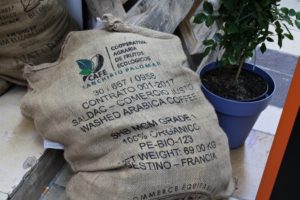
Stay tuned for my story of eating and drinking our way around Avignon.

Having a plan and then actually planning are two different things. A world apart, in fact.
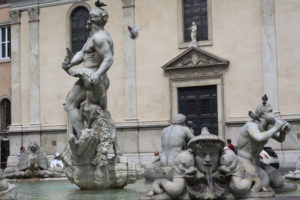
Gone are the days of showing up at the airport with a change of clothes…then hopping a plane to somewhere exiting and unknown. Passports, TSA, and security demand a little more planning than that.
Let’s plan…at least a little.
Checking airfare and finding the right prices, deciding where to stay, and looking through guidebooks and websites presents half the fun of travel for me. Maybe, it’s because I’ve done this countless times. Maybe, it’s because I know what I’m doing. Or, maybe it’s because I have a plan.
Plans don’t have to be long, drawn out, set-in-stone documents. Plans are just simple guides…something to help you start off on the right foot. Starting with the right plan can be the difference in a great trip and one that leaves you frustrated.
I like check lists. I also like spreadsheets. They help keep me organized.
You may not like either of those! That’s okay. Keep reading and something may jump out at you!
These suggestions, tips, and planning tricks have been compiled from my travels, from other professional travelers, from travel journalists, and from those who love to escape somewhere new.
Figure out what works for you and start planning.
Trieste…Loitering at its Best

“Trieste offers no unforgettable landmark, no universally familiar melody, no unmistakable cuisine.” Jan Morris
Why on earth would anyone go to Trieste after reading that quote from travel writer Jan Morris? Because. In fact, writers have come to Trieste for years to embrace the city’s prickly grace, savor its glistening belle époque cafes, and enjoy the lack of tourism. Having said that, the best way to experience Trieste is by loitering.
Start your day with a fantastic cup of coffee, relaxing in the Piazza dell’Unita d’Italia. After all, this is one of Europe’s greatest coffee ports, supplying more than 40% of Italy’s coffee. The thriving coffee industry began here with the Austro-Hungarian government and is still considered the coffee capital of Italy.
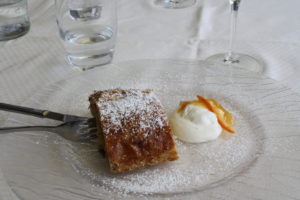
As for the Piazza, this vast public domain is supposed to be the largest square opening onto a waterfront in Italy. Dozens of cafes and bars open onto the Piazza. Sit and savor coffee in the morning, prosecco in the afternoon…or the other way around. It doesn’t matter. Watch the ships in the harbor as you listen to locals greeting each other in Triestino, the local dialect still in wide use. Enjoy a Viennese pastry with coffee or chocolate cake and nibbles with your prosecco. If it’s the hour of the passeggiata, the so Italian moment between the end of the workday and dinnertime…an entirely different scene unfolds in the Piazza. Trieste hospitality includes more nibbles with your evening prosecco. Life is good.
Trieste is a medium size seaport literally teetering on the edge of Italy, its limestone plateau gracefully tumbling into the Adriatic Sea. Its history is somewhat convoluted and Trieste has been in more than one tug of war between countries. It once was one of the oldest parts of the Habsburg Monarchy. Throughout history Trieste has been an important spot in the struggle between the Eastern and Western blocs after WWII.
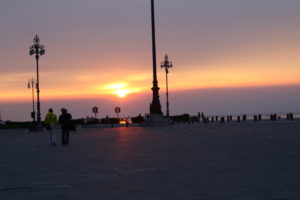
History and its influences are evident in the streets, buildings, food, and castles. Sitting in the Piazza, look at the buildings bordering the three sides of the square. With a boxy wedding cake like style, these massive buildings look like they belong in Germany…not Italy. Many streets appear to be symmetrical with buildings resembling everything from rigid, almost Teutonic in style to one showing off proud neo-Classical features. Italian flair mixed in with Germanic rigidness proves how history influenced this city. Influence of the Roman Empire remains here as well, with the Roman theatre ruins. Built between the first and second centuries AD, these were uncovered in 1938.
Of course, there’s the castle…Castello Miramare to be exact. Lying on the waterfront only five miles from the city center, this castle was built on a rocky cliff between 1856 and 1860 as the residence for Archduke Ferdinand Maximilian of Hapsburg and his wife Charlotte of Belgium. Eclectic in design is the only way to describe the features included…an aquarium like fixture in one ceiling, an impressive display of weapons, and styles throughout that combine Gothic, Renaissance, and Medieval. The 22 hectar large park with its imported soil, exotic trees, and spectacular plants and flowers from all over the world were meant to be impressive. Included on the grounds is the Castelletto, a small castle where Charlotte lived after her return from Mexico. Sadly, it is also where she was locked up after a nervous breakdown.
History didn’t forget the food, either. Most pastries are rich, flaky, and Viennese in style and taste. In fact, the local cuisine is just as diverse as the population of Trieste. German influenced sauerkraut, salt cod from the Adriatic, or local red wine…nothing stereotypical here.
Trieste…a city meant to be walked and explored. Linger…loiter…savor at a relaxed tempo. Don’t worry about the other Italian cities putting on their show of architectural splendor. Trieste is a modern city sometimes neglected by guide books. Take some time to explore this corner of Italy.
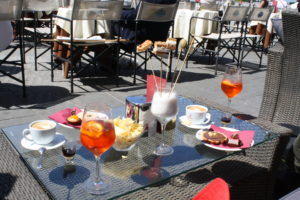
If You Go: Fly into Venice and take the two hour train ride. Once in Trieste, you can walk everywhere.
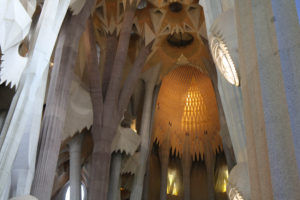
Most of these things, I pack. Again, in small quantities. Some are must-have items. You’ll figure out which ones are yours. Keep in mind, they may differ depending upon the trip you’re taking. That’s the beauty of this list.
Compression bags are perfect for consolidating less-needed items, or even dirty laundry. Don’t have compression bags? Use large re-sealable bags. After you put your things in the bag, close it part way, and squish out as much air as you can. Then, finish sealing it.
If you use a resealable bag for each charger and label the bag, you’ll know exactly what goes with what device. If all your devices take the same charger, it’s still handy to have it in its own bag. In your hotel room, put the empty bag by your glasses, phone, or something else you know you won’t forget. That will remind you of the charger sitting in an outlet across the room or behind the desk lamp.
Trying to figure out how to pack your shoes? You may need to take a nice pair and don’t want them scuffed up in your suitcase. Or, you may need to bring home some sandy ones after a day at the beach. Use a disposable shower cap. The elastic edge helps hold the shoes in and the plastic keeps them away from other clothes. In fact, I keep one from a hotel in my suitcase.
Wondering why you need to pack some of these things?
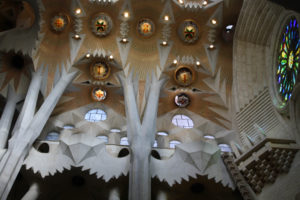
Check out these simple tips if your trip is six months out:
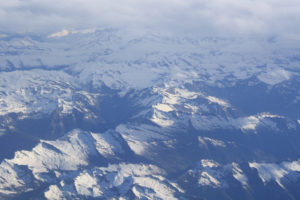
Do you sleep on planes? If so, you probably already have your routine set. If not, maybe some of these tips will help.
A sleep mask blocks out the light. Ear plugs block out sounds. Noise cancelling headphones can be a great addition to your carry-on bag.
If your flight is an overnight one, it might help to dim the screen or shut it off completely.
If you’re taller than the blankets given on long flights, you might want to bring a shawl or lightweight blanket of your own. That way you can stay warm enough.
Consider bringing an extra pair of socks.
Make sure your legs have enough room. I know there isn’t much extra space to deal with, but moving whatever you can out of the way will help.
If you’re used to taking Melatonin to help with sleep, consider taking it on long flights as well.
If motion sickness is an issue, be sure to talk to your physician and see what you can take.
Sometimes, having an essential oil like lavender helps as well.

If you normally have a glass of wine before you go to bed, have one in the air.
If you have extra time in the airport before you depart, get a massage.
Be sure to wear comfortable, not constricting, clothes.
What are your suggestions?
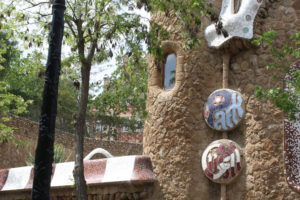
“There are no straight lines or corners in nature. Therefore, buildings must have no straight lines or sharp corners.” Antioni Gaudi
That quote rings true when you walk through Park Güell in Barcelona.
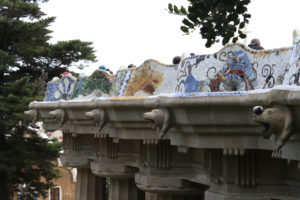
Park Güell was commissioned by Eusebi Güell who wanted to create a stylish park for Barcelona aristocracy. When he acquired this large estate in the late 1800s, he deemed it the perfect place for a park worthy of his wealthy clientele. After all, the views looking out over the sea and all of Barcelona were unbeatable. His plan was to design and then sell the plots.
He hired Antoni Gaudi, a practitioner of Catalan Modernism. Gaudi already had built or was in the process of building a wine cellar in El Garraf, the church of the Colonia Gruell, Palacio Güell, Casa Mila, Casa Vicens, work on the Nativity façade and crypt of La Sagrada Familia. Quite the architect.
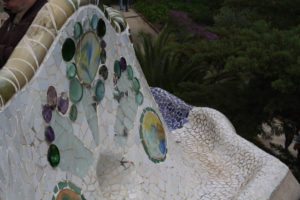
His vision was that the 60 triangular plots with their complex network of roads, viaducts, and stairs would wind through the estate. All this while working within severe restrictions. Only one sixth of the entire plot could be built and he had to stay within the height requirements, so he didn’t disturb the views of other residents.
Gaudi respected the existing vegetation, like carob trees and olive groves. When he introduced new species, he chose Mediterranean plants. He also devised systems for collecting and storing water from the cooking systems he learned as a child.
All good ideas.
However, the complex conditions of the sale of plots, old contracts, the lack of adequate transportation, and the very exclusive character of the urbanization made it unfeasible. In the absence of buyers, the works were abandoned in 1914. Only two of the 60 planned houses had been built. The park thus became a large private garden, which Güell ceded for public events. At this time, it began to appear in the tourist guides of Barcelona as one of the attractions of the city.
Eusebi Güell died in his house in Park Güell in 1918 and his heirs offered the park to the City Council. In 1926 it was opened as a municipal park. The house of the Güell family was qualified as a public school, which took the name of Baldiri Reixac pedagogue.
Thanks to the work of Gaudí’s Friends, Gaudí’s house at the Park Güell opened to the public as a Casa Museu Gaudí in 1963.
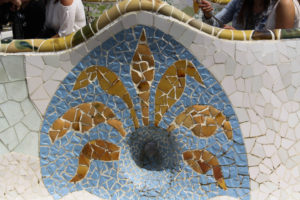
Park Güell thus became a public park highly valued by the locals and an important focus of attraction for visitors. It was recognized as an artistic monument in 1969 and was declared World Cultural Heritage by UNESCO in 1984.
Walk around. It’s not hard to imagine this as a planned urban development. Views are spectacular. I mean…who wouldn’t want to live here?
At the top of the park is a terraced area where you can view the entire park and Barcelona. Take some time to sit on one of the many vibrant, multi-colored tiled mosaic seats. They look hard and not very comfortable. Just sit. The way they are constructed provides a delightful seat with just the right amount of back support. Trust me, you’ll want to sit here and enjoy the afternoon.
Gaudi’s use of colored tile is everywhere. I do mean everywhere. I love the famous Gaudi dragon fountain at the entrance. Everyone wants their picture taken with it.
Try to envision yourself living here. Even in the early 1900s, this would have been the place to be. It’s that special.
Every time we thought we had seen it all, something new caught our eye. As we left, we meandered through the central walkway, supported by twisting rock pillars that appear to be growing right out of the ground. It was easy to see how Gaudi used nature in his design. It’s evident throughout.
We planned on spending a couple of hours here. It stretched to more than that.
If You Go: Park Güell is located on Olot street in Barcelona. To reach in the most convenient and practical way in the Monumental Axis three accesses are recommended: the one of the street of Larrard (main entrance), the one of the highway of the Carmel, no. 23, where there is also the car park for tourist coaches, and a third, the one from the pass of Sant Josep de la Muntanya, which is accessed by escalators. Be prepared for a lot of walking.
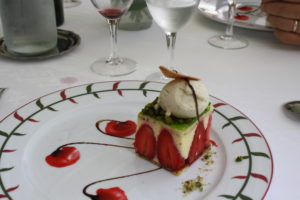
Want some more ideas for packing? Check these:
Clothing Items
I know I’m being redundant. But, in case you think this is another long list, think about where you’re going and what you’re going to do. If you don’t need a heavy fleece when you travel to Cancun, or hiking boots when you’re headed to the opera in Paris…don’t pack them. Don’t wear pajamas? Don’t take any.
Customize…customize.
On a serious note, I always have a packable umbrella and a lightweight rain jacket in my luggage. The weather report may say no rain, but I’ve heard that before. As a rule, I don’t travel in jeans. I want something more flexible.
Scarves are chic, warm you up, cool you down (if dampened), block the sun, and can be worn as an accessory with different outfits. For churches that require your shoulders to be covered, a scarf is ideal. A nice Pashmina can double as a blanket or pillow and as a shawl for the evening. For me, it’s a must have in my carry-on.
As for jewelry, leave the good stuff at home. I know you like to look good and that’s okay. Get a couple of cheaper, nice looking pieces. I leave my diamond wedding ring home and wear a fake one. I travel with one bracelet and one necklace. If something happened to any of those three pieces…I wouldn’t be devastated.
Flip-flops are ideal for questionable showers, the beach, visiting temples, or homes where it’s customary to remove your shoes. They don’t take up much room, either.

9 months out…
You’re excited about your destination. You could be going to visit grandkids, or you could be heading to the top of the Eiffel Tower. It’s exciting either way. What should you look at for your upcoming trip?
Let’s think about 12 months from now. Yes, a whole year away. Planning any travel?

This might seem like overkill to you, but if you know you’re going somewhere a year from now, you may want to do a little research. Now. Why?
Let’s say you’re planning an around-the-world trip. This would be a good time to look at these things:
This is definitely a plan-a-year-in-advance kind of trip.
Maybe this trip isn’t on your bucket list. But, let’s say you know you’re going on some type of a trip next year. If you don’t already know the destination, or at least the general area, sit back and think about these things: